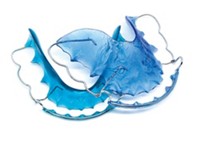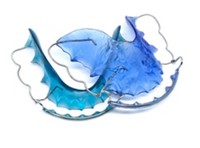Advertisement
Grab your lab coat. Let's get started
Welcome!
Welcome!
Create an account below to get 6 C&EN articles per month, receive newsletters and more - all free.
It seems this is your first time logging in online. Please enter the following information to continue.
As an ACS member you automatically get access to this site. All we need is few more details to create your reading experience.
Not you? Sign in with a different account.
Not you? Sign in with a different account.
ERROR 1
ERROR 1
ERROR 2
ERROR 2
ERROR 2
ERROR 2
ERROR 2
Password and Confirm password must match.
If you have an ACS member number, please enter it here so we can link this account to your membership. (optional)
ERROR 2
ACS values your privacy. By submitting your information, you are gaining access to C&EN and subscribing to our weekly newsletter. We use the information you provide to make your reading experience better, and we will never sell your data to third party members.
Materials
Tooth Whiteners Weaken Enamel
Study suggests surface-bleaching agents may be detrimental to teeth's nanomechanical properties
by Bethany Halford
November 29, 2005

Brightening up your pearly whites may give you a healthier looking smile, but according to a new study, the bleaching process may actually be weakening your teeth.
Michelle E. Dickinson, a staff scientist with Minneapolis-based instrument maker Hysitron, found that over-the-counter and professional dental bleaching solutions reduce the hardness of tooth enamel by as much as 82%. Dickinson presented the research on Nov. 28 at the Materials Research Society meeting in Boston.
Before going to market, commercial tooth whiteners undergo safety testing. But Dickinson wondered if standard testing methods were really addressing how bleaching agents may be affecting the tooth’s surface.
Conventional testing of tooth strength and hardness is an average value taken over the entire tooth, Dickinson explains. Whitening products, however, act only upon a tooth’s surface, where they oxidize discolored enamel.
For her tests, Dickinson took extracted human teeth, coated them in clear nail polish, and then “opened little windows” in the varnish at different regions of the tooth’s surface. “I decided to study two parts of the tooth,” she said. “You only want the side of the tooth whitened—that’s the part that everyone sees—but the functional chewing surface could be affected by the bleach as well.”
Dickinson submitted the teeth to seven one-hour treatments—roughly equivalent to one week’s use—with a 10% carbamide peroxide solution that she purchased from a local drugstore. That concentration is standard for over-the-counter whitening products.
To mimic the prescription whiteners that dentists use, Dickinson prepared a 35% carbamide peroxide treatment. “I made my own solution because no one would give me any,” she said, adding that she consulted with dentists to get an accurate formulation.
Dickinson’s tests showed a dramatic decrease in tooth hardness. The over-the-counter whitener decreased tooth hardness by 22% on both regions of the tooth. “I thought that was pretty significant,” Dickinson told C&EN. Even more striking, the 35% carbamate peroxide solution decreased the hardness of the tooth’s chewing surface by a whopping 82%, from 5.09 gigapascals to 0.94 GPa, which, Dickinson said, is close to the hardness of dentin, the soft material beneath a tooth’s enamel.
Dickinson acknowledged that these results are preliminary and noted that it’s theoretically possible that teeth could remineralize. She hopes to redo the studies with fluoride-containing artificial saliva to get results that more closely mimic teeth’s natural environment.





Join the conversation
Contact the reporter
Submit a Letter to the Editor for publication
Engage with us on Twitter